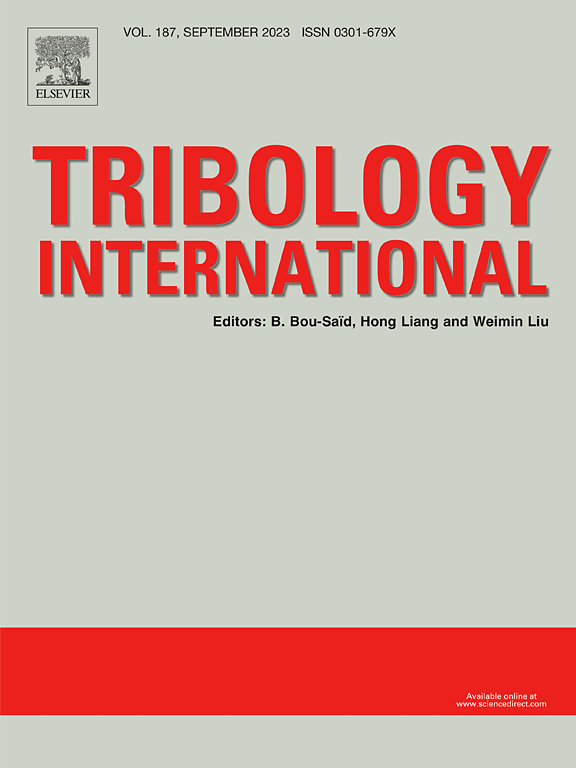TiNiCuZrNbTa refractory high entropy alloy coatings fabricated using laser cladding: Microstructure and tribological behavior
IF 6.1
1区 工程技术
Q1 ENGINEERING, MECHANICAL
引用次数: 0
Abstract
Aerospace copper alloy components typically require high wear resistance at surface connections to withstand substantial mechanical loads. In this study, a new refractory high-entropy alloy Ti35Ni34Cu10Zr10Nb8Ta3 coating was fabricated on copper substrate via laser cladding and its microstructral characteristics and tribological behaviors were fully explored to enhance surface durability. The results show that the obtained coatings exhibit a dense, defect-free microstructure with strong interfacial bonding, composed predominantly of TiNb, TiCuNi, and Zr14Cu51 phases. These features contributed to a significant improvement in wear resistance compared to conventional high entropy alloy. It is recognised that the presence of TiO2, ZrO2, Nb2O5, and Ta2O5 in the composite structure promoted the formation of a stable oxide layer during wear. The synergistic deformation behavior of these metal oxides helped reduce strain localization, thereby enhancing the coating’s durability. The research outcomes establish a viable strategy for tailoring the surface architecture of copper-based components, offering a pathway toward extended operational lifespans in harsh environments.
激光熔覆制备TiNiCuZrNbTa难熔高熵合金涂层:显微组织和摩擦学性能
航空航天铜合金部件通常要求表面连接处具有高耐磨性,以承受大量的机械载荷。本研究采用激光熔覆的方法在铜基体上制备了一种新型高熵耐火合金Ti35Ni34Cu10Zr10Nb8Ta3涂层,并对其显微组织特征和摩擦学行为进行了充分的研究,以提高其表面耐久性。结果表明:涂层具有致密、无缺陷、界面结合强的微观结构,主要由TiNb、TiCuNi和Zr14Cu51相组成;与传统的高熵合金相比,这些特性显著提高了耐磨性。结果表明,复合材料结构中TiO2、ZrO2、Nb2O5和Ta2O5的存在促进了磨损过程中稳定氧化层的形成。这些金属氧化物的协同变形行为有助于减少应变局部化,从而提高涂层的耐久性。研究结果为定制铜基组件的表面结构建立了可行的策略,为延长恶劣环境下的使用寿命提供了途径。
本文章由计算机程序翻译,如有差异,请以英文原文为准。
求助全文
约1分钟内获得全文
求助全文
来源期刊

Tribology International
工程技术-工程:机械
CiteScore
10.10
自引率
16.10%
发文量
627
审稿时长
35 days
期刊介绍:
Tribology is the science of rubbing surfaces and contributes to every facet of our everyday life, from live cell friction to engine lubrication and seismology. As such tribology is truly multidisciplinary and this extraordinary breadth of scientific interest is reflected in the scope of Tribology International.
Tribology International seeks to publish original research papers of the highest scientific quality to provide an archival resource for scientists from all backgrounds. Written contributions are invited reporting experimental and modelling studies both in established areas of tribology and emerging fields. Scientific topics include the physics or chemistry of tribo-surfaces, bio-tribology, surface engineering and materials, contact mechanics, nano-tribology, lubricants and hydrodynamic lubrication.
 求助内容:
求助内容: 应助结果提醒方式:
应助结果提醒方式:


